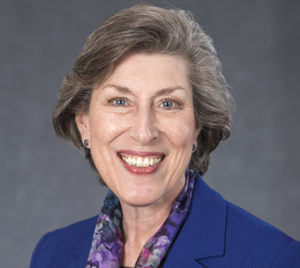
Readings:
First Reading: Acts 10:34a, 37-43
Responsorial Psalm 118:1-2, 16-17, 22-23
Second Reading: Colossians 3:1-4
Gospel: Mathew 28:1-10
QUAKING WITH JOY
“And behold, there was a great earthquake” (Matt 28:2)
This year, many of us will be celebrating Easter very differently than we have in the past, as we participate in the liturgy online and eat alone or only with our immediate household. Some may be missing from the table as they fight illness alone in a hospital while relatives and friends long to be with them in person. Some will be mourning a loved one who succumbed to the virus and could not have a funeral celebration that would have brought a measure of consolation. Some will be going to work on Easter, providing essential services as they fear contagion for themselves and their family. Some will be terrified about what will happen when they can’t pay the rent or have money for food.
As people the world over are experiencing massive upheavals in our lives, a detail unique to Matthew’s account of the empty tomb catches our attention. As Mary Magdalene and another Mary come to the tomb, the placid daybreak is shattered with “a great earthquake” (28:2), echoing the description of the aftermath of the death of Jesus found only in Matthew. Just after Jesus utters his final words and breathes his last, Matthew says, “The earth shook, and the rocks were split. The tombs also were opened, and many bodies of the saints who had fallen asleep were raised. After his resurrection they came out of the tombs and entered the holy city and appeared to many” (27:51-53).
The seismic shifts in our lives just now are causing untold numbers of deaths, economic devastation, and ruptures in systems we took for granted. It feels like an earthquake as everything is split asunder. As earthquakes entomb people in the rubble of collapsed buildings, we can feel similarly trapped by the pervasive death and the collapse of life as we knew it. The earthquakes in the Gospel have the opposite effect: they split open tombs and raise to new life those held in the grip of death. They signal tectonic shifts made possible for humankind through God’s action in Christ.
Foremost is the shift away from paralyzing fear to an empowering joy. The angel’s first words to the women are “Do not be afraid!” (v. 5). The centurion and those keeping watch over the crucified Jesus, were terrified at the earthquake and what took place after his death (27:54), as were the guards at the tomb, who “were shaken with fear” so that they “became like dead men.” Not so Jesus’s disciples. The angel directs them away from seeking Jesus the crucified so that they can experience him as risen. God’s messenger invites them to come and see the place where he lay, but then directs them to go out quickly. They are not to stay in the place of death. They are not to build a monument to the martyr Jesus and glorify his death but rather to announce and live the new life that bursts forth from the empty grave.
Harboring some fear, they follow the angel’s instructions, and let joy overtake them. Then Jesus himself appears to them and reiterates his oft-repeated invitation to his disciples to let go the death-grip of fear (Matt 8:26; 10:26, 28, 31; 14:27; 17:7). They can move from fear to joy, when they come to know that Jesus never abandons his shaken people and that he is able to transform even the most brutal effects of death. It is not only in this one definitive act of raising the crucified Christ that God’s life-giving power is exercised, but in every act of mercy and in every move toward reconciliation enacted by Jesus’s disciples.
Easter is not only about what happened to Jesus but, to a great degree, it is about what happens to us as we live lives that are transformed by his rising. In his letter to the Colossians, Paul speaks about Christians being so united with Christ that when he dies, we die with him. And when he is raised, so we too. We not only await final transformation but, every time we stand with the crucified peoples of our day, as did Mary Magdalene and the other Mary, the Risen One is alive in us as we break the hold of death-dealing powers even now.
Poet laureate Maya Angelou captures this sense in her poem, “Still I Rise,” as she speaks about the past horrors of an enslaved people and rising to new life:
“Out of the huts of history’s shame
I rise
Up from a past that’s rooted in pain
I rise . . .
Leaving behind the nights of terror and fear
I rise
Into a daybreak that’s wondrously clear
I rise
Bringing the gifts that my ancestors gave,
I am the dream and the hope of the slave.
I rise
I rise
I rise.”
I wonder what new forms our lives will take individually, collectively, and globally and what joys will be shaken awake in us as Christ raises us to new life beyond this present death.
Sr. Barbara E. Reid, OP
Professor of New Testament Studies